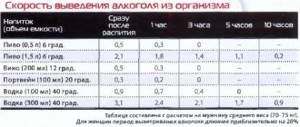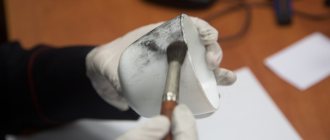Your driver's license is about to expire and you realize with horror that you will have to undergo a medical examination again to replace your license?
But over several years, your visual acuity has decreased and you are worried that perhaps for this reason you will not be given a certificate?
Do not panic. There are indeed vision restrictions for obtaining a driver's license, but let's take it one by one.
Perhaps in your case the situation is solvable and it is enough to put on glasses or contacts to still be granted admission?!
Reasons why a driver will be denied a license
The presence of these diseases may limit the ability to operate the machine:
- mental disorders,
- symptomatic diseases,
- delusional states,
- schizophrenia,
- oligophrenia,
- bipolar emotional disorder,
- schizoneurosis,
- epileptic seizures,
- deafness,
- serious cardiovascular diseases,
- achromatopsia,
- mental disorder caused by the use of medications.
Completing this list is driver blindness. Additional contraindications include:
- fitishism,
- transsexualism,
- voyeurism,
- pedophilia,
- bi-transsexualism.
Will a driver be issued a license if they have vision problems?
When it becomes possible to improve visual acuity by using one of the traditional techniques, then driving a car is quite acceptable. For example, sometimes it is possible to wear glasses when driving.
There may be disturbances in the functioning of the eyes, but they should not adversely affect the driving process. These changes in the body of many people occur individually. If changes in visual acuity cause a lot of trouble, you should contact an ophthalmologist to select certain means to correct visual acuity.
IMPORTANT !!! Without an ophthalmologist's mark, the driver will not be allowed to drive a car. Some generalists try to learn the letter table by heart. They do not take into account the extensive experience of health workers in identifying such cunning people. Hesitations when naming letters will be a clear signal to the ophthalmologist that the table should be changed and the vision test should be carried out using a different one. Usually the specialist directs the driver’s attention to variations with circles open to one side. It is simply impossible to remember them by heart.
A visit to the ophthalmologist is a very important point in passing the medical examination. Such a check is more necessary for the driver himself than for the health worker, because driving with poor eyesight is quite difficult. Often such driving ends in participation in an accident where people can get hurt.
What diseases make it impossible to obtain a driver's license?
The need to undergo a medical examination for citizens wishing to become drivers is provided for by the provisions of the Federal Law of December 10, 1995 No. 196 “On Road Safety”. When contacting the State Traffic Inspectorate, a medical certificate is needed in the following cases:
- obtaining a driver's license for the first time;
- return of a driver's license after it was revoked for driving while intoxicated;
- replacement of the VU due to expiration.
You can find the answer to the question for which diseases a driver’s license is not issued in the Government Decree “On the list of medical contraindications... for driving a vehicle,” which came into force in January 2015. It lists groups of diseases according to the International Classification of Diseases (ICD), rather than specific diagnoses. These include the following contraindications to driving:
- mental, symptomatic and other organic disorders;
- delusional and schizotypal disorders, schizophrenia;
- affective disorders (mood disorders);
- somatomorphic and stress-related disorders, neurotic;
- personality disorders in adulthood;
- mental retardation;
- behavioral disorders and mental disorders caused by the use of psychoactive substances;
- epilepsy;
- achromatopsia;
- severe cardiovascular diseases.
The list of diseases that prevent you from obtaining a driver's license ends with blindness in both eyes.
What are the requirements?
If a motorist uses glasses while driving, they must be taken with him to the doctor. Diagnosis of visual acuity indicators is carried out using tables with letter images. Each category will have specific requirements. To become the owner of a category “B” document, vision of at least 0.8 diopters is required. The second organ may have 0.4 diopters.
Subcategory “C” will require the motorist to have an acuity of one of the visual organs of 0.7. However, both eyes do not always have the same visual acuity. The maximum seeing organ should have indicators above 0.6, and the visually impaired organ should have indicators above 0.2.
People using lenses must understand that the difference between the indicators must be less than 3 divisions. If a motorist has one eye completely blind, then the indicators of the second visual organ must exceed 0.8 diopters.
What tables do ophthalmologists use to check vision?
There are a huge number of tests and tables for checking vision. In practice, ophthalmologists use almost the same tables and pictures, and this does not even depend on the city or region of residence.
Sivtsev tables
This is the most famous table that has been used to test vision since childhood. The white sheet contains various printed characters, the sizes of which decrease with each line. There are 12 lines in total. A person with good eyesight should see and recognize the images on the 10th line, sitting at a distance of 5 meters from this table. What are lines 11 and 12 needed for? They are used for people with visual accuracy of 150 and 200%, as well as in cases where the length of the medical office is less than necessary. The light from the lamp should fall on the table itself, but in no case on the person. Errors during diagnostics are allowed, but only from lines 4 to 6 (no more than 1 error) and from lines 7 to 10 (no more than 2 errors).
In this way, visual acuity disorders can be seen with an accuracy of 0.5 diopters. There are several options for these tables, which depict either letters or icons. With this method, it is necessary to determine visual acuity separately for each eye.
Golovin table
This table is very similar to the previous one, with the only difference being that images of Landolt rings are used here, where there are breaks on different sides. The rings themselves are geometrically correct. With each line, the diameter of the rings gradually decreases.
The diagnostic technique is also identical here. A person sits opposite the table at a distance of 5 meters. With perfect vision, he should be able to easily recognize the directions of ring breaks from lines 1 to 10. The backlight should fall on the table itself, and not on the person’s eyes.
Determining the presence of color blindness
The main thing for a motorist is to have not only acute vision, but also the ability to distinguish shades. Otherwise, he may well drive through a red signal instead of a green one. This can create an accident on the roadway. Typically, experts use the Rabkin table to diagnose color blindness.
Color sensitivity can be divided into the following categories:
- trichromancers,
- protanopes,
- deuteranols.
Color blindness is considered an insurmountable barrier to obtaining the coveted certificate. However, if the disease was diagnosed at an early stage, during this period you can obtain a medical certificate giving permission to drive.
Diagnosis is made using images with multi-colored circles. The patient is asked to name the geometric shapes or numbers that he sees. When difficulties arise with this, we can talk about the presence of color blindness. In this case, you can forget about rights.
When is driving for visual reasons prohibited?
They may legally refuse to issue motorists with a license for a tractor, “C”, “D”, “D1” or other types if they have these diseases:
- disorders of the lining of the eye organ in the chronic stage,
- limitation of the width of the radius of vision by 20 degrees,
- inflammation of the lacrimal sac that does not respond to traditional treatment,
- color vision impairment,
- diplopia accompanied by strabismus,
- retinal disinsertion,
- decreased night vision,
- glaucoma,
- damage to areas of the retina or optic nerve.
Medical contraindications for vision
A driver's license is not issued to people with the following visual diseases:
- A chronic disease of the membranes of the eye, accompanied by a significant deterioration in vision function.
- Chronic inflammation of the lacrimal sac, which cannot be treated with conservative methods.
- Persistent diplopia due to strabismus of any etiology.
- Limitation of horizons by more than 20 degrees.
- Visual acuity decreases depending on refractive errors, changes in the fundus and other reasons that are organic in nature.
- Impaired color perception such as dichromasia.
- Diseases of the optic nerve and retina. In particular, medical contraindications for vision to obtain a driver's license are caused by the presence of the following diseases from this group: retinal detachment;
- optic nerve atrophy;
- retinitis pigmentosa and others.
- Glaucoma. For compensated glaucoma diagnosed at the initial stage, re-examination is allowed after a year.
Appearance of the GCL identifier in the certificate
From 2014, drivers will be required to issue a new type of license, as required by law. In this document, the index identifies new subcategories of auto control. Using these marks, you can determine the presence of restrictions due to health conditions. When a doctor determines that you cannot drive a car without glasses or lenses, a GCL mark is placed on your license. To obtain a license, a motorist must be photographed wearing glasses. This will dispel all the inspector’s doubts regarding the safety of the driver’s movement.
Is it possible to get a driver's license with poor eyesight?
Taking into account the last formulation of the limitation, we can conclude: if vision can be improved using one of the standard methods, then, for example, by wearing glasses, it is quite possible to drive a vehicle.
At the same time, on automotive forums you can find advice to memorize the order of letters in the bottom row of the ophthalmic table. But you should know that a driver’s license based on vision is issued by experienced specialists, whose offices have been visited by more than one generation of applicants for a driver’s license. They are familiar with all these tricks. Therefore, having noticed the slightest confusion of a citizen (after all, he needs to restore the sequence of letters in his memory), the doctor will continue checking on another table.
It is impossible to remember all the options in which the circle does not close in a certain place. By voicing incorrect answers, the citizen will be included in the list of persons who cannot be tested.
What awaits a motorist driving without glasses?
If a motorist neglects the recommendations of doctors and drives a car without using devices such as glasses or lenses, then in the eyes of representatives of the law he acts as an offender. If there is a sign saying “Goggles are required”, driving without them is prohibited. For this offense, the driver faces a penalty of up to 15,000 rubles.
ATTENTION !!! The severity of the penalty is due to the fact that traffic cops equate the offense to driving without a license, since a license without glasses is invalid.
Most drivers who have forgotten their glasses at home try to convince the inspector of miraculous healing and restoration of vision. Medicine allows for improvement of visual acuity naturally or with the help of surgical intervention, but for the inspector such a statement is not an argument, since the rights with a special mark prescribe something completely different.
Ophthalmologist bans driving
Very often, a doctor simply cannot issue a permit to drive a car. This happens in the following cases:
- the postoperative period is not over yet,
- the presence of significant changes in certain areas of the mucous membrane of the eyes,
- progressive glaucoma,
- optic neuropathy or other diseases.
Sometimes the motorist himself feels the changes that have happened to him recently. To make movement more comfortable, you should visit an ophthalmologist yourself. If the doctor selects the optical devices correctly, the driver can continue driving on completely legal grounds. With the help of glasses or lenses, he will be able to eliminate the lack of visual acuity. Incorrectly selected corrective agents can be the reason for denial of permission to drive, so this issue should not be joked about.
IMPORTANT !!! Sometimes the doctor may recommend that the patient undergo a course of visual stimulation. Often, such procedures help solve the problem of reduced eye sharpness. Before visiting this specialist, you should reduce physical activity and try to completely abstain from alcoholic beverages.
When an ophthalmologist does not allow a driver to drive a car, but the driver’s vision is fine, he can always appeal the doctor’s decision to the appropriate authority.
How many lines do you need to see to drive with glasses?
Low vision is not always a contraindication to driving, but driving without glasses or lenses may well result in a fine – and for a fairly significant amount.
What documents regulate the presence of glasses for a driver?
The Federal Law “On Road Safety” contains a separate article that sets out medical restrictions, contraindications and indications for driving vehicles. It allows driving with a number of diseases, but on the condition that the driver uses special products and devices, including equipping the car with them, to compensate for the restrictions caused by the disease.
Based on these general provisions, we can conclude that in case of poor vision, which cannot provide the driver with safe driving, he is required to use lenses or glasses.
Chapter 4 of the Federal Law “On Road Safety” states that if a driver’s license has a mark that it is valid subject to certain conditions, then their absence automatically makes the driver’s license invalid, which leads to the corresponding punishment. Simply put, if the driver does not have glasses or lenses, the license is invalid.
What is the penalty for driving without glasses or contacts?
Based on the regulatory conflict described above, if a driver drives without glasses, although there is a corresponding mark on his driver’s license, this driving permit is considered invalid. The driver is simply driving without a license. This is already a serious violation, which is qualified under Art.
The cost of a full medical examination can range from 600 to 3,000 rubles, depending on the region. A certificate is issued for a certain period:
- 3 years - healthy drivers of personal cars;
- 2 years - for persons working as drivers;
- 1 year - people under 20 and over 50 years old or with health conditions.
Check with an ophthalmologist
Examination by an eye specialist is carried out in several directions:
- checking visual acuity (with what vision a license is granted);
- determining the level of color perception;
- study of the visual field (horizon).
At the same time, even if there are some violations, this does not mean that driving vehicles is strictly prohibited.
Visual acuity
If a motorist uses glasses or contact lenses, they must be with him at the appointment.
There are many contraindications to driving a car:
- musculoskeletal disorders;
- absence of limbs or parts thereof;
- some neurological diseases;
- mental disorders;
- serious diseases of the cardiovascular system;
- deafness.
And yet, the most acute stumbling block to obtaining the coveted medical certificate, for obvious reasons, is visual impairment.
Examination procedure
The future motorist can undergo the necessary commission at any medical institution that has the right to conduct professional medical examinations.
You will definitely need to visit a therapist, neurologist, ophthalmologist, otolaryngologist (ENT), surgeon, psychiatrist, narcologist and gynecologist (for women).
Important The difference between corrective lenses on each eye should not be more than three diopters.
By the way, visual acuity to obtain a driver’s license is also checked using corrective means. But in this case it should approach unity.
Color perception
Visual acuity is not the only factor that affects road safety when driving. It is also important to understand how much the future driver is able to distinguish between colors, and accordingly, to understand the meaning of some signs and colors of traffic lights.
For this test, the Rabkin table is used. It is permitted to drive with a type A color anomaly, which is treated and corrected with lenses and glasses.
Horizon
When considering the question of what vision restrictions exist to obtain a license, it is necessary to mention the horizons.
During this test it is also possible to determine which eye is the dominant one.
What is the minimum vision to obtain a license? If a person is applying for a category “B” driver’s license, then the leading eye must have an indicator of at least 0.6 units, and the second eye must have a score of at least 0.2. When registering for category “C”, it is required that the dominant eye has from 0.8 units and above, and the second - from 0.4. Sometimes it happens that a person does not have a pronounced dominant eye, or both are equally weak. In this case, the acceptable vision for driving is 0.7 units each.
But even when allowing driving with glasses or contacts, doctors are guided by certain rules. For example, the optical power of vision correction devices should not exceed eight diopters (both plus and minus).
In this article we will talk about what vision is allowed for driving.
Acceptable indicators
You have already decided to switch from public transport to driving your own car, have saved up the amount necessary to study at a driving school, found out that in order to enroll you will need to pass a medical examination, and finally, you are thinking about whether you can satisfy the requests of doctors.
An ophthalmologist will be among the doctors who will test you. He will determine and record your visual acuity level on your certificate.
Acuity
You need to know that the acceptable vision for a driver's license has a minimum.
- For category B, the visual acuity of the strongest eye must reach a minimum of 0.6 units. The weaker eye can see 0.2 units.
A narrowing of a person’s visual fields, as a rule, is a symptom of more serious diseases, which in themselves are contraindications for driving a vehicle.
What eye diseases exist?
There are other types of eye diseases, the presence of which may prevent a person from obtaining a license. Among them:
- retinal disinsertion,
- glaucoma,
- cataracts, etc.
Without a doubt, the final verdict depends on the severity of the disease, which only an ophthalmologist can objectively judge during an examination.
It should be noted that some people with serious eye diseases go to all sorts of tricks to get a car license (for example, they fake tests, buy a certificate, etc.).
That is, the issuance of rights is prohibited in the following cases:
- For three months after successful eye surgery.
- If there are persistent changes in the mucous membrane and muscles of the eyelids, which impairs vision (if the patient is operated on, he can count on receiving a license).
- When there are violations of the lacrimal sac (after surgery, the issuance of rights is allowed).
- If a person suffers from diplopia (objects appear double in the eyes).
- If glaucoma occurs (its stage and severity are taken into account).
It happens that people deliberately try to mislead the medical commission. To do this, they learn the table by heart, hide their illnesses and try to hide the fact that they wear contact lenses. But it is unlikely that the plan will work out. Finding the lenses will not be a problem.
Moreover, you should refrain from purchasing rights.
To obtain rights of a specific category, you must appear:
- therapist;
- neurologist;
- ophthalmologist;
- otolaryngologist;
- surgeon;
- psychiatrist;
- narcologist;
- a gynecologist (if a woman wants to get her license).
There must be medical records if there are any diseases.
The received certificate will be valid for a specific period:
- When the driver has a personal car and his health is normal - 3 years.
- When a person works as a personal driver for hire - 2 years.
- When the driver is under 20 years old or people over 50, as well as in the presence of deviations in health status - 1 year.
Medical examination by an ophthalmologist
As already mentioned, to drive a car you must have medical certificates stating that your vision is normal.
platon-consulting.ru © 2018
What can trigger a court order to deprive of rights?
When a driver is diagnosed with a disease that interferes with driving, many motorists are interested in the question of what restrictions may be imposed. If suspicions arise, the prosecutor's office sends a request to the hospital about the state of health of the person being examined. The information received will be verified with the traffic police database. If the driver has medical contraindications that limit his ability to drive, the prosecutor's office sends the case to court. When the courts make a decision not in favor of the driver, he may be deprived of his license forever or until he recovers.
Risks on the road due to impaired visual acuity
Regardless of what visual impairment the driver has, the risks of dangerous situations occurring on the horn increase significantly. Even a slight limitation of visibility and visual acuity increases the likelihood that in an emergency the driver may not have time to orient himself and simply will not notice an obstacle on the road, a person, a road sign or another vehicle.
To minimize risks and protect yourself as a motorist and other road users, regular ophthalmological examinations are recommended. Monitoring your vision is the responsibility that lies primarily with the driver, who must understand that if any deviations in vision from the norm occur, you must immediately contact an ophthalmologist for examination.
Thus, we recommend that you be conscious and undergo an eye examination not only at the time of obtaining or replacing a driver’s license, but also in the event of detecting any complaints from the visual organs.
Interesting articles on the topic:
- Vision criteria for weapon ownership
- Eye protection in dazzling snowy mountains
- Martial arts and vision
- Vision and diving
- Development of a bionic eye
Molchanova Anna Alexandrovna
Changes in legislation
Recently, the requirements for drivers have become significantly stricter. A resolution was submitted for consideration requiring the motorist to carry a medical certificate with him at all times. The list of diseases that prevent a driver from legally accessing a car has been expanded. When undergoing outpatient treatment for a number of diseases, the driver will be temporarily limited in driving. These diseases include influenza or hypertension. The bills have been submitted for consideration, but it is unknown whether they will be adopted this year. There are a number of reasons why implementing this solution is quite problematic.
In order to travel comfortably and safely by car, you should be attentive to your own health and compliance with traffic rules. Only in this case the driver will not have any unpleasant “surprises” on the road.
Content
- What vision can you drive with?
- Colorblindness
- Narrow outlook
- What other restrictions are prohibited from driving?
The driver must react to changes in the situation on the road within one second. Prompt response is ensured by good vision. If there are problems with it, then the driver must use corrective means - glasses or contact lenses. They regulate visual acuity, but do not always ensure a successful medical examination.
We will tell you in this article which visual limitations may prevent you from obtaining a driver’s license, and which are not an obstacle to driving.











